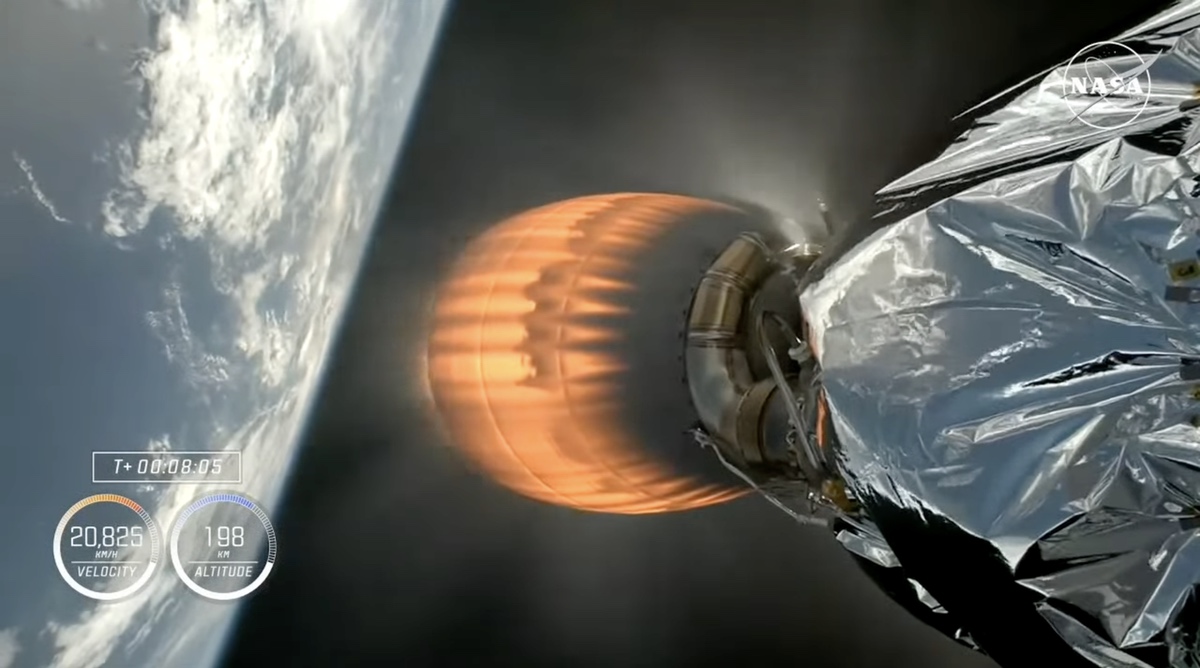SpaceX Temporarily Halts Falcon 9 Launches After Recent Upper Stage Issue
Washington — SpaceX has announced a temporary suspension of its Falcon 9 rocket launches following a problem encountered during the deorbit burn of the upper stage on a crewed mission on September 28. This incident marks the second anomaly involving the Falcon 9’s upper stage in less than three months.
In a social media post on September 29, SpaceX revealed that the upper stage experienced what they termed an "off-nominal deorbit burn" during the Crew-9 mission, which had launched on September 28. The company stated, "As a result, the second stage safely landed in the ocean, but outside of the targeted area."
Understanding the Deorbit Burn
The deorbit burn is a critical maneuver designed to guide the upper stage of the rocket back into Earth’s atmosphere, targeting a reentry over an unpopulated region of the South Pacific Ocean. This process helps avoid leaving the stage in orbit, which would contribute to space debris and pose a risk to other satellites and spacecraft. Additionally, it prevents uncontrolled reentry that could endanger populated areas.
The designated reentry location for this mission, based on airspace and marine hazard notices, was east of New Zealand. However, due to the anomaly, the stage landed outside of this targeted zone.
Previous Issues with Falcon 9 Upper Stage
This incident follows another upper stage issue that occurred less than three months ago. On a Starlink launch on July 11, the single Merlin engine in the upper stage malfunctioned during a second burn intended to circularize its orbit. Although the satellites were deployed, they ended up in lower orbits, leading to their eventual reentry.
An investigation into the July incident found that a liquid oxygen leak, caused by a crack in a sense line for a pressure sensor, led to "excessive cooling of engine components." This cooling affected the components responsible for delivering ignition fluid to the engine, resulting in a hard start when the engine attempted to reignite. This damaged the engine and caused a loss of attitude control.
Video footage of the first burn of the upper stage during the July launch showed ice buildup on engine components due to the liquid oxygen leak. However, there were no similar signs of ice buildup or other anomalies observed during the Crew-9 launch, and neither SpaceX nor NASA reported any issues with the rocket in the post-launch press conference.
Impact on Upcoming Launches
It remains unclear how long SpaceX will pause Falcon 9 launches. Following the July incident, Falcon 9 launches were halted for 15 days, with the rocket returning to flight on July 27. Additionally, SpaceX suspended launches for two days in late August after a booster tipped over and exploded upon landing on a droneship in the Atlantic Ocean.
In both previous cases, SpaceX required approval from the Federal Aviation Administration (FAA) to resume launches. This involved either completing a mishap investigation or receiving a public safety determination from the agency, confirming that the incident did not pose a risk to the general public. The FAA has not yet responded to questions regarding the September 29 incident.
Upcoming Time-Sensitive Launches
The timing of this anomaly is particularly critical as SpaceX is preparing for two important launches in the coming weeks. One Falcon 9 is scheduled to launch as early as October 7, carrying the European Space Agency’s Hera asteroid mission. Additionally, a Falcon Heavy, whose upper stage is similar to that of the Falcon 9, is slated to launch NASA’s Europa Clipper spacecraft no earlier than October 10. Both missions have launch windows extending through late October.
The Importance of Safety and Reliability
SpaceX’s decision to temporarily halt Falcon 9 launches underscores the company’s commitment to safety and reliability. By thoroughly investigating the root cause of the recent anomaly, SpaceX aims to ensure the continued success and safety of its launches.
Understanding the Technical Jargon
For readers unfamiliar with some of the technical terms used in the context of space launches, here are some simplified explanations:
- Deorbit Burn: A maneuver performed by a rocket’s upper stage to re-enter Earth’s atmosphere in a controlled manner, usually targeting a specific, uninhabited area to avoid risks associated with space debris and uncontrolled reentry.
- Upper Stage: The part of the rocket that continues to operate after the initial launch phase, responsible for placing the payload into its intended orbit or performing other critical maneuvers.
- Merlin Engine: A type of rocket engine used by SpaceX in its Falcon 9 and Falcon Heavy rockets. It is designed to be reusable and highly efficient.
- Liquid Oxygen (LOX): A cryogenic liquid used as an oxidizer in rocket engines, enabling the combustion of fuel in the vacuum of space.
Industry Reactions and Reviews
The space industry watches these developments closely, as SpaceX has become a pivotal player in both commercial and governmental space missions. Frequent launches and high reliability are key pillars of SpaceX’s strategy, and any anomaly, however minor, draws significant attention.
While the suspension of launches may cause short-term delays, the long-term benefits of addressing and resolving these issues are paramount. Both industry experts and enthusiasts recognize the critical nature of these investigations and the importance of maintaining rigorous safety standards.
Conclusion
The recent anomaly with SpaceX’s Falcon 9 upper stage highlights the challenges and complexities involved in space launches. While the temporary suspension of launches may cause some delays, it is a necessary step to ensure the safety and reliability of future missions. As SpaceX continues to investigate and address these issues, the space community remains confident in the company’s ability to deliver successful and safe launches in the future.
For more details and updates on this developing story, visit the official SpaceX website and follow their social media channels.
For more Information, Refer to this article.


































